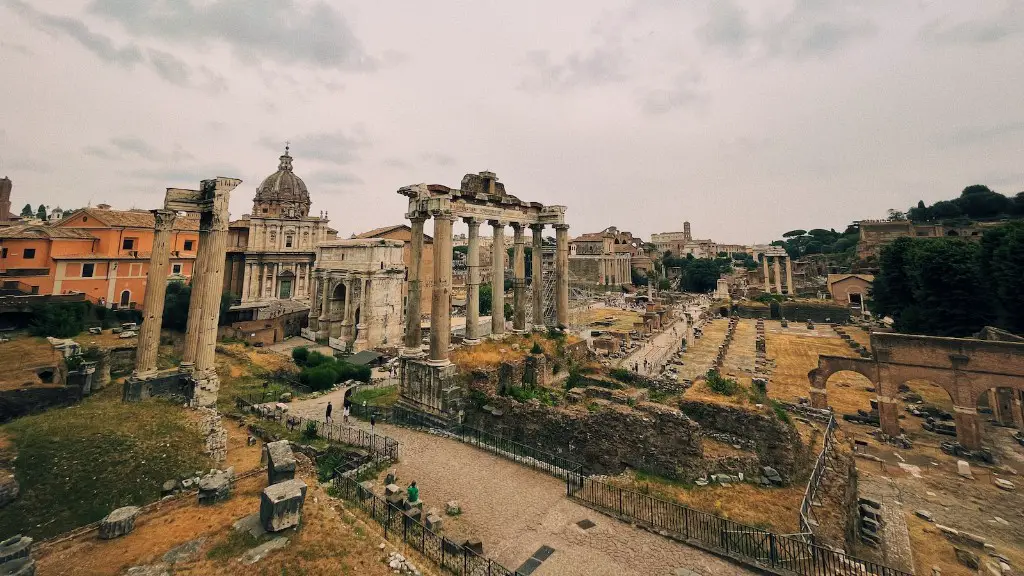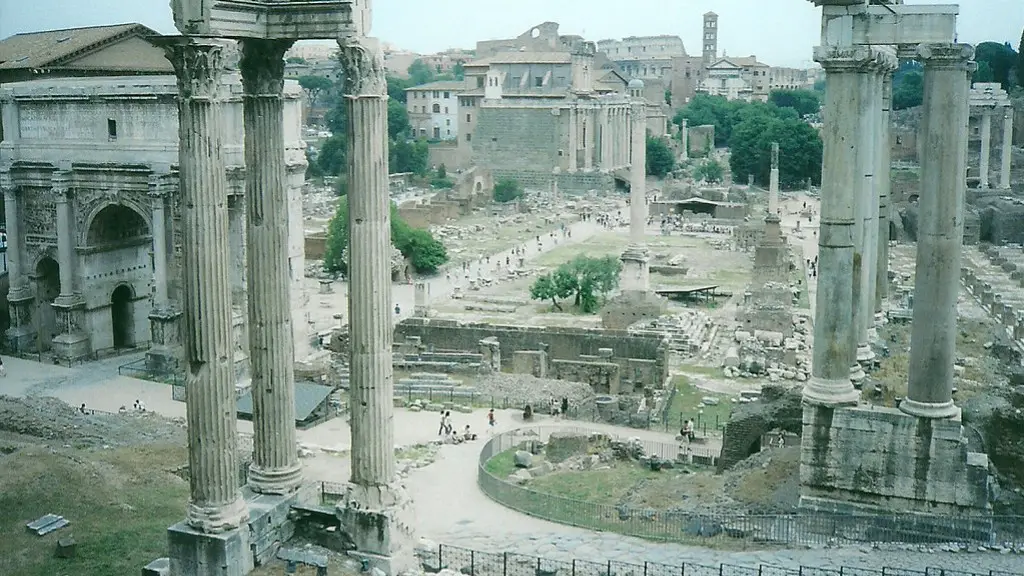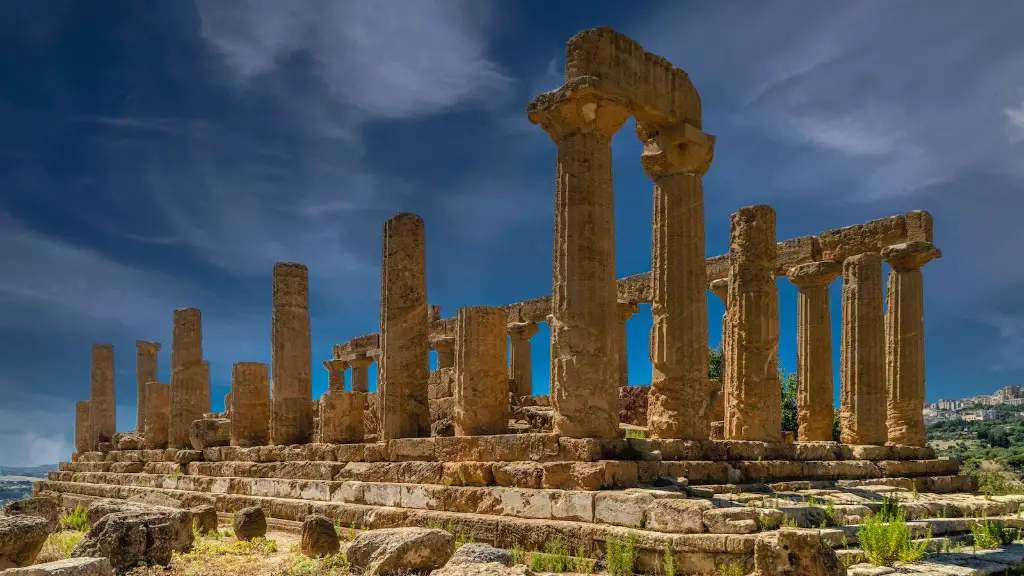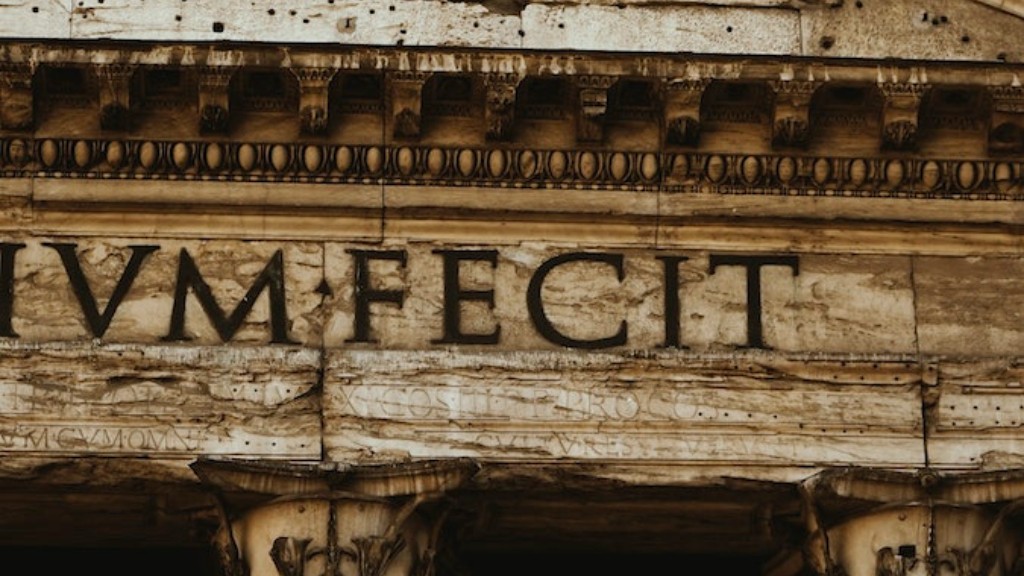In Ancient Rome, social classes fluctuated between times of peace and war. However, the Roman social structure was divided into three distinct classes: the Patricians, the Plebeians, and the Freedmen. Each class had its own distinct duties and responsibilities and forms the foundation of the modern Roman society.
Patricians were the elite social class of Ancient Rome. In order to become a Patrician, one had to be born into a Patrician family. Patricians were the only ones permitted to become a political office holder, such as consuls and senators, in Ancient Rome and they also held a variety of religious, economic, and social positions. Patricians enjoyed lots of privileges such as the right to own land, vote, and manage public works projects.
Plebeians were the largest social class in Ancient Rome. They were the non-elite common people who held menial jobs and menial tasks. Plebeians had fewer personal liberties compared to the Patricians, such as the right to carry weapons, and could not own land. In terms of political power, Plebeians had no say in the running of the city and could not hold political office.
The third distinct social class in Ancient Rome was the Freedmen. Freedmen were former slaves who were given the freedom to live outside the slave-master relationship. Freedmen often held lower-class jobs and were not granted civil and political rights. However, Freedmen were allowed to hold some positions in Ancient Rome, such as medical practitioners and business owners.
The three main social classes, the Patricians, Plebeians and freedmen, have created a framework that has endured throughout history. The structure of the Roman social classes allowed Rome to create a powerful state. The class system enabled the government to balance their power and bring peace and stability to Roman society.
The Impact of Social Classes
The three social classes in Ancient Rome had a significant impact on the city’s economy and its relationships with other nations. By creating the Patricians, Plebeians, and Freedmen classes of Roman citizens, Ancient Rome was able to distribute wealth, power, and influence among its citizens. This enabled Rome to build a strong empire and develop a better-developed economy.
The class system also had a large effect on the culture of Ancient Rome. The wealthier Patricians had access to finer things, such as luxurious items and the latest styles of clothing. The Plebeians and freedmen, on the other hand, had to work hard for the food and other items they needed to survive. As a result, the lower classes developed an appreciation for more humble items, such as plain fabrics and simple tools.
Furthermore, the three social classes in Ancient Rome had various religious duties and responsibilities. The Patricians were in charge of many ritual activities and some religious ceremonies, while the Plebeians and Freedmen were in charge of less important religious duties. This hierarchical system allowed for a more organized and structured religious life in Ancient Rome.
Decline of Social Classes in Ancient Rome
The three main social classes in Ancient Rome were not permanent. As the city flourished and grew, more freedoms were granted to the lower classes. This slowly eroded the power of the Patrician class and allowed the other classes to gain more political and economic power in the city.
The end of slavery in the Roman Empire gave Freedmen even greater rights and freedoms. As a result, Freedmen were able to gain social mobility by entering trade and commerce. This enabled them to gain more economic freedom and eliminate the differences between them and the other two classes.
The social changes that happened in Ancient Rome gradually changed the structure of the city’s social classes. As the Roman Empire expanded, it began to incorporate different cultures and ideas from other ethnic societies. This led to a more diverse and inclusive political and social system in Ancient Rome, which dissolved the power of the Patrician classes.
Modern Day Influence
The three social classes in Ancient Rome still influence the social structure of modern day societies. This influence can be seen in modern democracies, where citizens are free to participate in politics, pursue higher education, and never worry about being a slave. Additionally, the class system of Ancient Rome is still evident in some modern day cultures, such as the Mediterranean countries where a strong sense of social class still exists.
The three main social classes in Ancient Rome established the foundation of our modern societies, and have had a lasting impact on the way people view privilege and power. While the class system of Ancient Rome was not perfect, it provided a basis for today’s social structure and provided much needed stability to the Roman Empire.
Gender in Ancient Rome
Women and men had different roles in Ancient Rome, depending on their social class. The Patrician women had the most freedoms, such as the right to own property, take part in the political process, and receive an education. On the other hand, Plebeian women were not allowed to own property and could not participate in any form of political process.
Freedwomen had a slightly different set of rights and freedoms compared to the other two classes. Freedwomen could receive an education and take part in religious ceremonies, but could not own property or take part in the political process. They were, however, able to enter into marriage contracts and work alongside their husband.
Overall, the three social classes in Ancient Rome gave women and men different rights and duties. While Patricians enjoyed the most freedoms, Plebeians and Freedmen had more limited rights. This class system ensured that a balance of power was maintained in Roman society.
Issues of Social Classes in Ancient Rome
Despite the advantages of having a class system in Ancient Roman society, it also presented certain issues. For example, the lower classes were not given any political powers while the Patricians had total control over the state. This created a stark divide between the social classes, which caused friction and discontent among the people.
The use of slaves in Ancient Rome was also a major problem. Slaves were given little to no freedom and were treated as possessions. This system of oppression is still evident in some parts of the world today.
Finally, the rigid class structure also presented an issue for those who wanted to move from one class to another. While it was possible to gain social mobility from one class to another, it was often difficult and required hard work and a strong connection to the upper classes.




